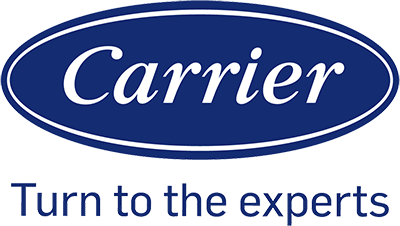Understanding Air Filter Maintenance
Maintaining clean air conditioning filters is crucial for both our system’s efficiency and the indoor air quality of our homes. Regular air filter maintenance guarantees that our HVAC systems run optimally while preventing pollutants and allergens from circulating.
Firstly, it’s essential to know the type of our air filters. Disposable air filters are convenient but require consistent replacement, usually every 1-3 months. On the other hand, reusable filters can be cleaned and used again, offering a longer lifespan and potentially saving money in the long term.
Table 1: Filter Types and Maintenance Requirements
| Filter Type | Maintenance Frequency | Replacement Indicators |
|---|---|---|
| Disposable Filter | 1-3 months | Visible dirt, damage |
| Reusable Filter | Clean every 1-3 months | Persistent odors, damage |
The state of our air filters directly affects AC efficiency. A clogged or dirty filter forces the system to work harder, leading to increased energy use and wear. This results in higher utility bills and a potential decrease in the system’s lifespan. To maintain an optimal balance, we should routinely inspect and judge whether to clean or replace our filters.
For filter replacement, follow the manufacturer’s instructions on size and type to ensure proper fit and functionality. While replacing filters, we want to confirm that they are sealed well to prevent air from bypassing the filter.
A clean air filter is vital for maintaining good air quality. Without regular maintenance, the accumulation of dust and debris can lead to health issues and reduce the overall air quality in our space. For those with allergies or respiratory issues, this aspect of maintenance is particularly important.
In summary, we emphasize the importance of our routine inspection and upkeep of air filters—whether disposable or reusable—as it significantly influences the performance and air quality outcomes of our AC system.
Effective Cleaning Methods
To ensure optimal air quality and system efficiency, we must regularly clean our air conditioning filters. Accumulated dust and allergens can impair filter performance, so employing the right cleaning techniques is crucial.
Manual Cleaning of Filters
For manual cleaning, we first switch off the air conditioning unit and carefully remove the filter. We inspect the filter for debris and use a soft brush or vacuum with a brush attachment to gently remove loose dust and dirt. For caked-on grime, we can rinse the filter with warm water. It is important to avoid using harsh detergents as they may damage the filter. If the filter is extremely dirty, soaking it in a mixture of warm water and a mild detergent or equal parts water and vinegar for about one hour helps break down the contaminants. After soaking, the filter is rinsed thoroughly with clean water to remove any residual cleaning solution.
- Instructions for rinsing:
- Use warm, not hot, water.
- Gently pour water over the filter, or use a soft stream from a hose.
- Ensure all detergent or vinegar is rinsed away.
Once cleaned, we must let the filter air dry completely before reinserting it into the unit. This process can take several hours and must not be rushed with artificial heat sources to prevent filter damage.
- Drying Tips:
- Lay the filter flat on a clean towel.
- Place it in a well-ventilated area.
- Allow ample time to air dry—do not reinstall when damp.
Machine-Assisted Cleaning
In machine-assisted cleaning, we utilize devices such as vacuum cleaners with HEPA filters or specialized air filter cleaning machines. These are ideal for removing finer particles like pollen and other allergens, providing a deeper clean than manual methods alone. Always follow the manufacturer’s instructions when using any cleaning machine.
- Best Practices:
- Use a low-suction setting on the vacuum.
- Avoid touching the filter’s delicate surface with the vacuum nozzle.
- Inspect the filter after vacuuming to ensure all visible debris has been removed.
We may also use our vacuum to pre-clean the filter before it undergoes a manual soak and rinse if the filter type permits this process. This advanced approach to cleaning ensures we address the widest range of contaminants, from large debris to microscopic dust particles.
Remember, the frequency of cleaning will depend on several factors including usage and environment, and it’s imperative to consult the manufacturer’s recommendations or an HVAC professional for specific maintenance schedules for your air conditioning filters.
Maximizing AC Performance
We must ensure that our air conditioning filters are well-maintained to achieve optimal system performance. A clean filter is crucial for maintaining the airflow that keeps the condenser functioning properly. Regularly checking and replacing clogged filters can prevent a significant decrease in energy efficiency.
- Check Filters Monthly: Inspect air conditioner filters each month, especially during high usage seasons.
- Replace As Needed: Filters should be replaced every 1-3 months, depending on usage and environmental factors.
By keeping filters unobstructed, we reduce strain on our HVAC system, leading to lower energy consumption and savings on our energy bills. Additionally, this simple maintenance task can prolong the life of the entire system.
- Regular Maintenance: Schedule routine HVAC check-ups to ensure everything is in working order.
Remember, a well-maintained air conditioner not only performs better but also delivers the energy efficiency required to keep our homes comfortable without incurring unnecessary costs.
Health Benefits and Air Quality

Maintaining clean air conditioning filters is crucial to ensure a healthy indoor air quality. We often overlook the air we breathe indoors, but the truth is, our indoor environment can be up to five times more polluted than outdoor air. By regularly changing or cleaning our air conditioner filters, we effectively remove particles that contribute to poor air quality and in turn, can improve our overall health.
Why Filtration Matters:
- Reduces Allergens: Allergy sufferers can breathe easier as clean filters trap dust, pollen, and pet dander.
- Prevents Mold: Filters play a role in hindering mold growth by maintaining low humidity levels.
- Limits Pollutants: They catch various pollutants that can cause respiratory problems.
Improved Indoor Air Quality
- Asthma Relief: Individuals with asthma benefit from reduced triggers in the air.
- Minimizes Respiratory Issues: Cleaner air minimizes the risks associated with respiratory issues.
Proper filtration results in healthy indoor air quality, which is vital for our well-being. Unfiltered air can be a vehicle for various small particles that may lead to health concerns. By ensuring our air conditioner filter is clean, we enhance the air quality and protect ourselves against the potential development of health issues related to poor indoor air conditions. Let us remember that taking care of our air is a simple step towards a healthier lifestyle.
Maintenance Scheduling and Tips
When managing the maintenance of air conditioning filters, we suggest adhering to a regular cleaning schedule to prevent dirt buildup, which can lead to higher energy bills and system breakdown. Typically, we should examine and clean AC filters every month, especially during peak usage seasons.
Here’s a quick-reference table for an AC maintenance timeline:
| Component | Frequency |
|---|---|
| AC filters | Monthly |
| Coils & fans | Annually or as needed |
| Vents and ducts | Every 3-5 years or after renovations |
| Entire system | Professional inspection annually or biannually |
For different types of air conditioners, it’s crucial to follow the manufacturer’s instructions for specific maintenance guidelines. If owning a system with a smart thermostat, we can use it to monitor filter status and receive alerts for maintenance.
We also need to be mindful of the indoor environment; for example, if our homes have pets or are prone to dust, we may need to clean or change filters more frequently. Be sure to turn off the thermostat before starting any maintenance.
During cleaning, carefully remove the filter with a screwdriver if necessary. We should inspect filters for tears or holes—if found, the filters must be replaced. Washable filters can be gently cleaned with warm water and white vinegar.
Cleaning the furnace, coils, fans, and other internal parts may require more expertise. When in doubt, it’s wise to call a certified AC technician to prevent inadvertent damage. We must also ensure nothing obstructs air flow, such as furniture or drapes, around the vents and ducts.
Regular upkeep not only increases the efficiency of the HVAC system but also extends its life, showing that careful maintenance greatly benefits both our comfort and our wallets.




